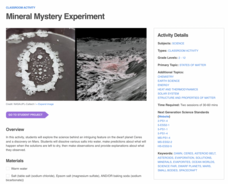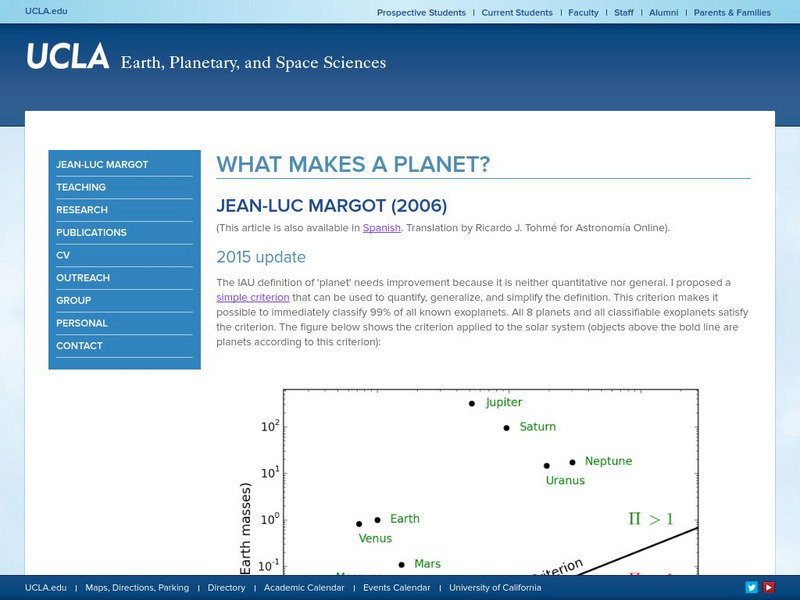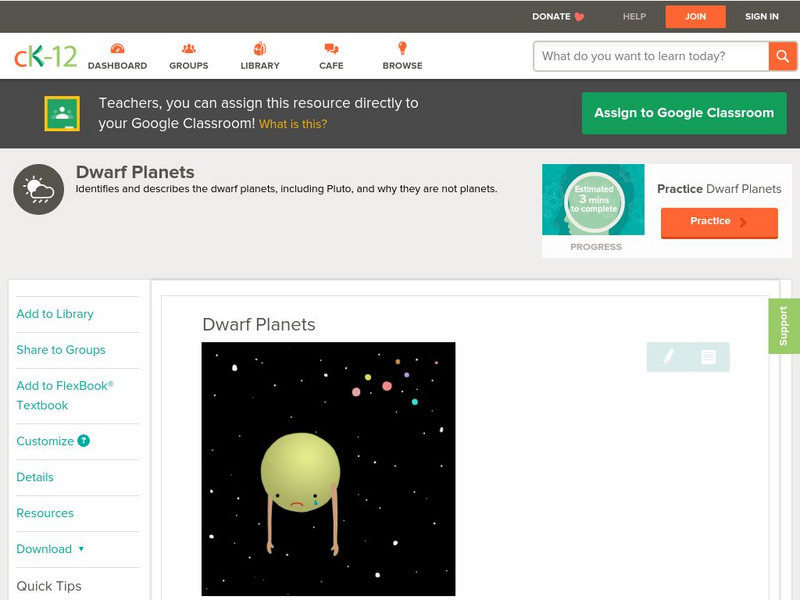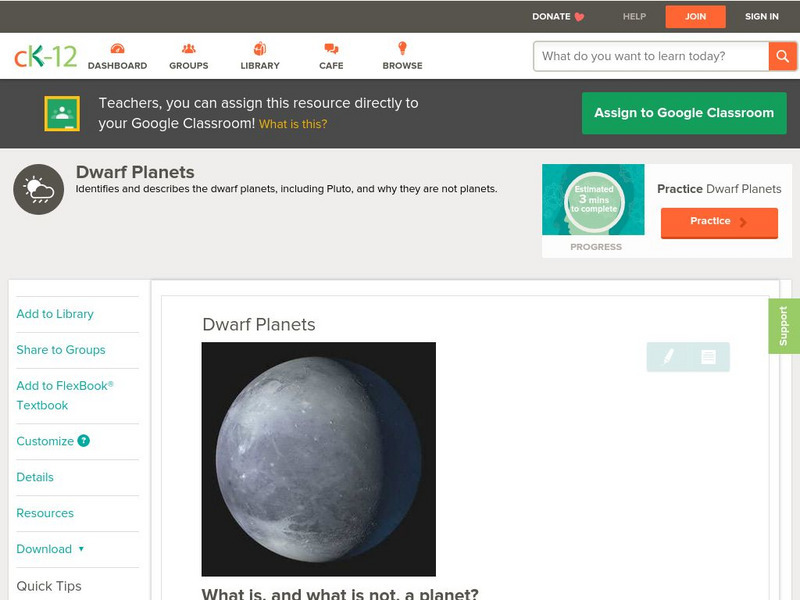NASA
Mineral Mystery Experiment
One way to study something is to try to replicate it. Young scientists do just that as they use solutions to recreate mineral structures on a dwarf planet. They make solutions with different types of salt, evaporate them, and observe the...
American Museum of Natural History
Solar System Scavenger Hunt
Scholars go on a hunt to locate objects that best fit the measurements to create an eye-catching scale model of the solar system.
University of Colorado
Star Light, Star Bright? Finding Remote Atmospheres
People might be able to breath there. Learners view a simulation of a planet passing in front of a star. Using data from occultations of planets with known types of atmospheres, scholars determine whether the simulated planet has an...
CK-12 Foundation
Venn Diagrams: Planets and Dwarf Planets of the Solar System
Yes, Venn diagrams are helpful in science, too. Learners use an interactive to classify celestial bodies as having moons, as dwarf plants, as both, or as neither. They answer a set of challenge questions based on the Venn diagrams they...
California Institute of Technology
Cool Cosmos: Ask an Astronomer: Pluto
Visit this site and learn more about Pluto. Provides the answers to kids' most frequently asked questions.
BBC
Bbc Newsround: Top 5 Amazing Space Discoveries
Read about some of the most important space discoveries in recent times.
NASA
Dawn Mission: Dawn Classrooms: Dwarf Planets
Students learn about dwarf planet classification through a researched-based instructional strategy called direct vocabulary instruction. Teacher guide and student activity sheet are included.
University of California
Ucla: What Makes a Planet
This detailed essay defines planets and compares the characteristics to those of Pluto. Orbital graphs and background information clarify the change in Pluto's categorization. A copy of IAU's Resolution 5 is also contained in this essay.
Cosmos 4 kids
Cosmos4 Kids: Solar System: Pluto
Learn all about Pluto ..its discovery, basic facts, recognition as a planet, and most recently, its 'demotion' from a planet to a dwarf planet. The brief, to the point text makes this site most suitable for younger researchers.
E-learning for Kids
E Learning for Kids: Science: Seychelles: What Is the Solar System?
In this lesson, students learn about the planets, their moons, asteroids, comets, and dwarf planets in our solar system.
Famous Scientists
Famous Scientists: Michael E. Brown
This article discusses the life and scientific discoveries of Michael E. Brown. Learn how he is credited with downgrading Pluto from a planet to dwarf planet.
CK-12 Foundation
Ck 12: Earth Science: Dwarf Planets
[Free Registration/Login may be required to access all resource tools.] Describes the characteristics of dwarf planets.
CK-12 Foundation
Ck 12: Earth Science: Dwarf Planets
[Free Registration/Login may be required to access all resource tools.] Describes the characteristics of dwarf planets.
National Earth Science Teachers Association
Windows to the Universe: Our Solar System
Our solar system is filled with a wide assortment of celestial bodies - the Sun itself, our eight planets, dwarf planets, and asteroids - and on Earth, life itself! The inner solar system is occasionally visited by comets that loop in...
CK-12 Foundation
Ck 12: Earth Science: Other Celestial Bodies Study Guide
Review celestial bodies using this study guide.














